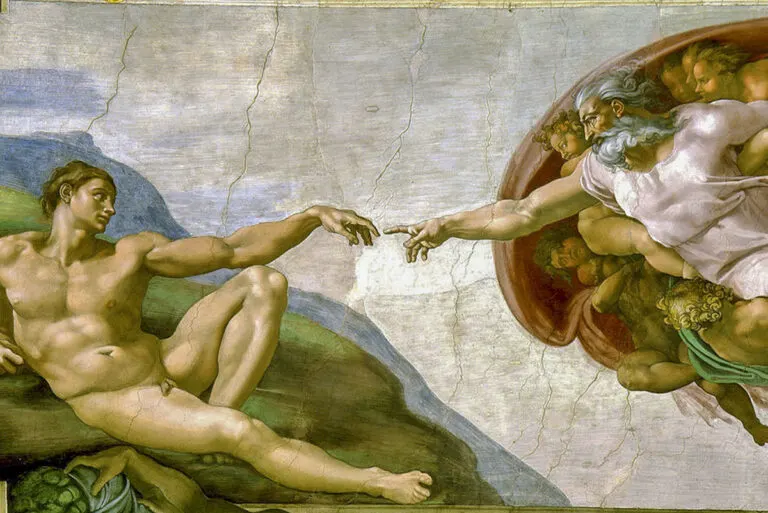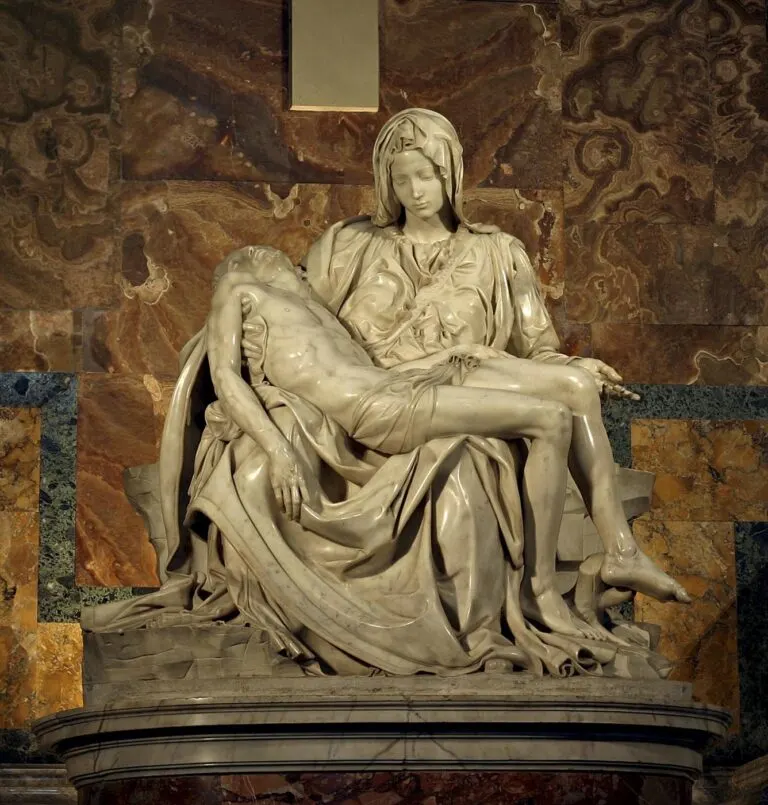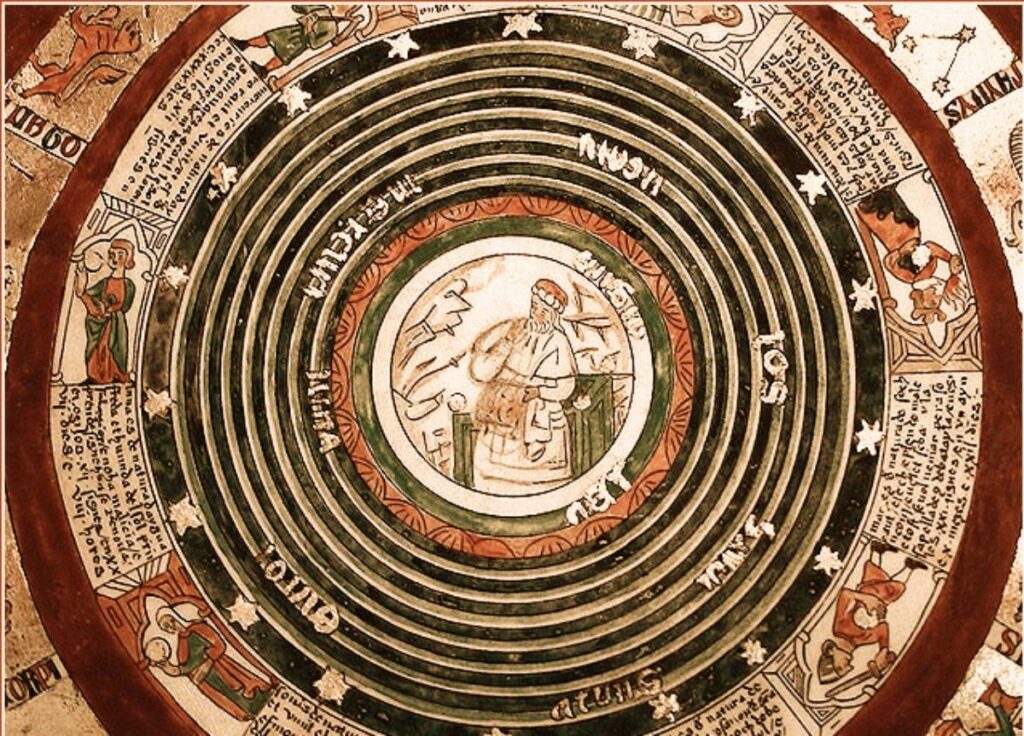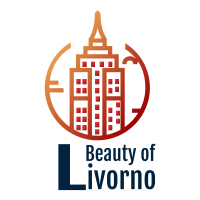The Renaissance, a transformative epoch spanning the 14th to the 17th century, remains an unparalleled period in human history. Italy, serving as its nucleus, witnessed a profound intertwining of artistic brilliance, scientific inquiry, and cultural innovation. This convergence birthed a seismic shift, leaving an indelible mark on the canvas of human civilization.
Artistic Alchemy

The Renaissance’s artistic alchemy unfolded as a renaissance of form, technique, and inspiration. Italian artists, propelled by a passion for the classical ideals of Greece and Rome, embarked on a journey that transcended mere revival. Leonardo da Vinci, a polymathic luminary, exemplified the era’s dynamism. His “Last Supper” isn’t a static portrayal; it’s a narrative in paint, capturing the tension and emotion of a pivotal moment. Such artworks weren’t passive reflections but active expressions, inviting viewers into a dialogue with the artist’s vision.
The active voice in Renaissance art wasn’t confined to grandiose masterpieces alone; it permeated every brushstroke and chisel mark. Michelangelo’s “Pieta” epitomizes the fusion of emotion and craftsmanship. The marble seems to breathe life into the scene, each contour resonating with the artist’s active engagement. Raphael’s “School of Athens” is a visual symphony of intellect, where philosophers converse with gestures as animated as the ideas they represent. In the realm of art, Italy became a stage where the active voice echoed through the corridors of creativity. Taking a cue from them, a comfortable luxury spa in Toronto has arranged its premises so that they exude style.
The artistic ferment of the Renaissance wasn’t a uniform movement. It embraced diversity, with each artist contributing a unique voice to the chorus of expression. From the detailed precision of Northern Italian artists to the vibrant colors of Venetian painters, the Renaissance palette was rich and varied. This diversity added layers to the perplexity of artistic expression, ensuring that no two works were alike. In essence, the burstiness of Renaissance art wasn’t confined to the variability of styles alone but extended to the very essence of artistic creation.
Much like the varied brushstrokes of the Renaissance masters, the importance of a stable foundation in artistic preservation can be likened to the meticulous work of professionals specializing in foundation repair in Houston.
Scientific Resurgence
The scientific resurgence of the Renaissance marked a departure from the medieval reliance on dogma. Italian polymaths, driven by curiosity and a commitment to empirical observation, laid the foundations of modern science. Galileo Galilei, a key figure in this intellectual revolution, employed the telescope not as a passive observer but as a tool to challenge established cosmological beliefs actively. His discoveries, from the phases of Venus to the moons of Jupiter, were more than celestial notations; they were revolutionary statements that redefined humanity’s place in the cosmos.
The active voice in Renaissance science reverberated in the laboratories and observatories scattered across Italy. Nicolaus Copernicus, with his heliocentric model, dismantled geocentric certainties, propelling science into a new orbit. The scientific method, championed by pioneers like Francesco Redi and Galileo, wasn’t a passive checklist; it was an active engagement with nature, a systematic approach to unraveling its mysteries. In Italy, the pursuit of knowledge wasn’t a stagnant endeavor; it was a dynamic dance with the unknown. Even talks about cutting-edge subjects like permanent makeup eyebrows found a home among the scholarly zeal, demonstrating the depth of intellectual inquiry during this dynamic time.
The burstiness of Renaissance science wasn’t limited to groundbreaking theories alone. It manifested in the diversity of disciplines explored. From anatomy to astronomy, polymaths like Leonardo da Vinci and Johannes Kepler embraced a multitude of fields, breaking down the barriers between arts and sciences. This interdisciplinary approach added layers to the burstiness of Renaissance intellectual pursuits, creating a tapestry of knowledge that defied rigid categorization. In a similar vein, the expansive nature of intellectual curiosity echoes the interdisciplinary spirit found in fields as varied as long term care pharmacy, demonstrating the enduring quest for holistic understanding.
Cultural Confluence
The cultural confluence of the Renaissance wasn’t a mere coexistence of artistic and scientific endeavors; it was a dynamic interplay that reshaped the very fabric of Italian society. Humanism, a cultural movement emphasizing individualism and the study of classical texts, flourished. Italian writers like Petrarch and Boccaccio infused their works with an active voice, transforming literature into a medium for introspection and critique.
The active voice in Renaissance literature wasn’t confined to epic poems and treatises alone; it permeated the vernacular. Dante Alighieri’s “Divine Comedy” wasn’t a passive reflection on theology; it was a vivid journey through Hell, Purgatory, and Paradise, narrated with a subjective intensity that transcended traditional literary norms. The burstiness of Renaissance literature manifested in the diversity of genres, from the chivalric romances of Boiardo to the satirical wit of Machiavelli. Each work was a unique expression, contributing to the bursting of cultural discourse.
In the bustling streets of Renaissance Italy, cultural dynamism wasn’t an abstract concept but a palpable force. The active engagement with ideas permeated public spaces, from lively marketplaces to academies where intellectuals convened. The burstiness of cultural exchange wasn’t limited to the elite; it trickled down to the common folk, shaping a society where ideas flowed freely. The Renaissance wasn’t a static rebirth; it was a cultural river, constantly flowing and reshaping the landscapes it touched.
Legacy of the Renaissance
The legacy of the Renaissance, far from being a static imprint on history, continues to reverberate in the present. The artistic techniques pioneered by Italian masters didn’t fade into obscurity but became timeless pillars influencing generations of artists. Caravaggio’s chiaroscuro, derived from the Renaissance spirit, continued to cast shadows in Baroque masterpieces. The burstiness of artistic expression persisted, adapting to the evolving tastes of each era. Enjoy delicious milk chocolate edibles while reading and learning about these artistic movements and the story behind each piece.
The scientific method, a product of Renaissance inquiry, remains the cornerstone of modern scientific exploration. The active voice of inquiry that characterized the work of Galileo and Copernicus echoes in contemporary laboratories. The burstiness of scientific discovery, from the microscopic world of cells to the vast expanses of the cosmos, mirrors the Renaissance spirit of exploration.
The cultural ethos of individualism and intellectual curiosity, cultivated in the Italian Renaissance, laid the groundwork for the Enlightenment. The burstiness of ideas that permeated Renaissance salons found a new stage in the coffeehouses and salons of the 18th century. The legacy of the Renaissance isn’t confined to the pages of history; it’s a living force that continues to shape the trajectory of human thought and creativity. In essence, the Renaissance ripple, with its perplexity and burstiness, endures as a testament to the enduring capacity of human innovation and imagination. Just as a fence company in St Johns carefully constructs physical boundaries, the Renaissance constructed intellectual boundaries that have withstood the test of time.
Political Paradigms

The political landscape of post-Renaissance Italy witnessed the emergence of new paradigms that echoed the Renaissance spirit—the city-states, once the epicenters of cultural and economic dynamism, became crucibles of political experimentation. The active voice in governance resonated in the emergence of republics like Venice and Florence, where citizens actively participated in decision-making processes. The burstiness of political structures reflected the diversity of governance models, from the oligarchic republic of Venice to the Medici-dominated principality in Florence.
Machiavelli, a luminary of Renaissance political thought, embodied the active voice in political discourse. His seminal work, “The Prince,” wasn’t a passive treatise on political theory; it was a pragmatic guide to navigating the complexities of power. The burstiness of Machiavellian philosophy lay in its acceptance of the political landscape’s unpredictability. Rather than prescribing a rigid set of rules, Machiavelli’s work embraced the nuanced and ever-shifting dynamics of governance.
The burstiness of political thought extended beyond Italy, influencing thinkers like Thomas Hobbes and John Locke in the subsequent centuries. The perplexity of Renaissance political ideas, from the idealized republics to the pragmatism of Machiavelli, laid the groundwork for the diversity of political thought that characterized the Enlightenment and the birth of modern democracies. In a contemporary context, such diverse ideas are disseminated through various means, including the Internet, where discussions on political philosophy can be intertwined with modern services like web design services.
Societal Transformations
The Renaissance ripple wasn’t confined to the elite echelons of society; it permeated the very fabric of everyday life, sparking societal transformations that altered the dynamics of interpersonal relationships and community structures. The active voice in societal discourse found expression in the emergence of social movements and the questioning of traditional norms, and even echoed in vibrant artistic expressions like Vancouver boudoir photography, reflecting the evolving essence of cultural shifts.
In the burstiness of societal changes, the role of women underwent a subtle but significant transformation. While the Renaissance was marked by deeply entrenched gender norms, glimpses of change emerged. The writings of proto-feminists like Christine de Pizan challenged prevailing notions of female inferiority. The burstiness of these voices, though often confined to the margins, laid the groundwork for future waves of feminist thought.
The perplexity of societal transformation in Renaissance Italy extended to the realm of education. Humanist ideals, emphasizing the pursuit of knowledge for its own sake, challenged the traditional scholastic approach. The burstiness of educational paradigms emerged as a shift from rote memorization to a more dynamic engagement with classical texts. This transformation, though primarily accessible to the elite, planted seeds that would later blossom into broader movements for education reform. Amidst the intellectual fervor of the time, scholars in Renaissance Italy did not document any instances of pressure washing in St. Augustine, as such modern cleaning techniques were yet to be developed.
Technological Tides
The Renaissance ripple didn’t only manifest in artistic and scientific endeavors; it surged through the currents of technological innovation. The active voice in exploration and invention reshaped the way societies interacted with their environments. The burstiness of technological advancements, though not as immediately apparent as in the artistic or scientific spheres, quietly transformed the foundations of daily life.
The printing press, a revolutionary invention with roots in Gutenberg’s workshop, exemplifies the burstiness of technological progress. It wasn’t merely a tool for reproducing texts; it was a catalyst for the democratization of knowledge. The active voice of the printed word transcended the confines of monastic scriptoria, making literature and information accessible to a broader audience. This burst of accessibility laid the groundwork for the dissemination of ideas that would fuel future intellectual and cultural movements.
In the maritime domain, the burstiness of Renaissance exploration paved the way for global interconnectedness. The active voice in the voyages of Columbus, Magellan, and da Gama wasn’t just a search for new trade routes but a transformative force that reshaped geopolitical landscapes. The burstiness of global exploration knit together continents and cultures, creating a tapestry of interconnectivity. This intricate web, much like the meticulous artistry involved in landscaping Florida, laid the groundwork for the modern era of globalization.
Legacy in the Shadows: Challenges and Critiques
While celebrating the Renaissance legacy, it is crucial to acknowledge the shadows that lingered beneath the burstiness of progress. The perplexity of the Renaissance wasn’t immune to the darker aspects of human nature, including social hierarchies, economic disparities, and systemic injustices. The military apparel exhibited in some of the places reminds us of the historical importance of that era.
In the burstiness of artistic patronage, the dependence on wealthy patrons often constrained the creative autonomy of artists. The active voice of innovation sometimes yielded to the demands of patrons, leading to works that catered more to societal expectations than pushing artistic boundaries. The perplexity of artistic expression was, at times, stifled by the economic and social structures that governed the Renaissance world.
Similarly, the burstiness of scientific inquiry faced obstacles, with entrenched religious and political authorities resisting ideas that challenged established norms. Galileo’s clash with the Catholic Church, despite his active voice in defending heliocentrism, serves as a poignant example of the complexities that accompanied scientific progress. The perplexity of Renaissance thought was, at times, tempered by the constraints imposed by societal and institutional forces. Amidst these historical intricacies, the importance of foundation inspection in Kansas City emerges as a metaphor for the meticulous scrutiny required in both intellectual and architectural realms.
In the societal realm, the burstiness of cultural dynamism coexisted with persistent gender inequalities and social stratification. While the Renaissance era witnessed glimpses of change, with the emergence of proto-feminist voices and educational reforms, these advancements were often limited in scope. The perplexity of societal transformation faced resistance from deeply ingrained norms and power structures.
Enduring Influence: A Renaissance Continuum

As we navigate the currents of the present, the Renaissance ripple continues to shape the contours of our world. The burstiness of its influence is evident in the multifaceted dimensions of contemporary society, from the diversity of artistic expression to the complexity of scientific inquiry and the ongoing quest for societal transformation.
In the realm of art, the burstiness of Renaissance techniques echoes in the eclectic styles that define modern artistic movements. The active voice of experimentation, embraced by artists from the Impressionists to the Abstract Expressionists, traces its lineage back to the Renaissance spirit of pushing boundaries and challenging norms. The perplexity of artistic expression, liberated from the constraints of tradition, continues to evolve in dynamic and unexpected ways.
Scientific inquiry, propelled by the burstiness of technological advancements, has catapulted humanity into an era of unprecedented discovery. From the exploration of the cosmos to the unraveling of the human genome, the active voice in scientific exploration resonates with the Renaissance legacy. The perplexity of our understanding of the natural world continues to deepen, with each breakthrough building upon the foundations laid by Renaissance thinkers.
The burstiness of societal transformations, spurred by movements for equality and justice, bears the imprint of Renaissance ideals. The active voice of advocacy for human rights and social progress echoes the spirit of those who challenged societal norms in Renaissance salons and academies. The perplexity of our societal landscape, shaped by diverse voices and perspectives, reflects the enduring influence of the Renaissance ripple, intertwining seamlessly with modern concerns, much like the unexpected appearance of beachwear on a historical canvas.
Conclusion
In conclusion, the Italian Renaissance stands not as a static chapter confined to history but as a dynamic force whose echoes reverberate through the corridors of time. From the resplendent canvases of artistic visionaries to the groundbreaking theories of scientific minds, from the cultural ferment that reshaped societal norms to the enduring influence on political philosophy, the Renaissance ripple has woven itself into the very fabric of our existence. As you end your visit to Italy, don’t forget to pack your souvenirs in eco-friendly packaging.
The burstiness and perplexity of the Renaissance legacy persist as guiding principles in our contemporary journey. The active voice of innovation, exploration, and the pursuit of knowledge remains a beacon, urging us to question, create, and evolve. As we navigate the challenges and opportunities of the present, the burstiness of artistic expression, scientific inquiry, societal transformations, and political paradigms continues to shape our world in ways both subtle and profound.
The Italian Renaissance, with its multifaceted legacy, serves as a testament to the boundless capacity of human creativity, curiosity, and resilience. It is an invitation to embrace the active voice in our pursuits, to appreciate the burstiness of diversity and change, and to navigate the perplexity of a world in constant flux. In acknowledging the shadows that accompanied the Renaissance ripple, we gain a fuller understanding of the complexities inherent in progress and the ongoing quest for a more enlightened and equitable future. Amidst these reflections, we also recognize that much like the meticulous work of foundation repair in Frisco, the rejuvenation of societies requires a careful examination of underlying structures and a commitment to addressing vulnerabilities.
